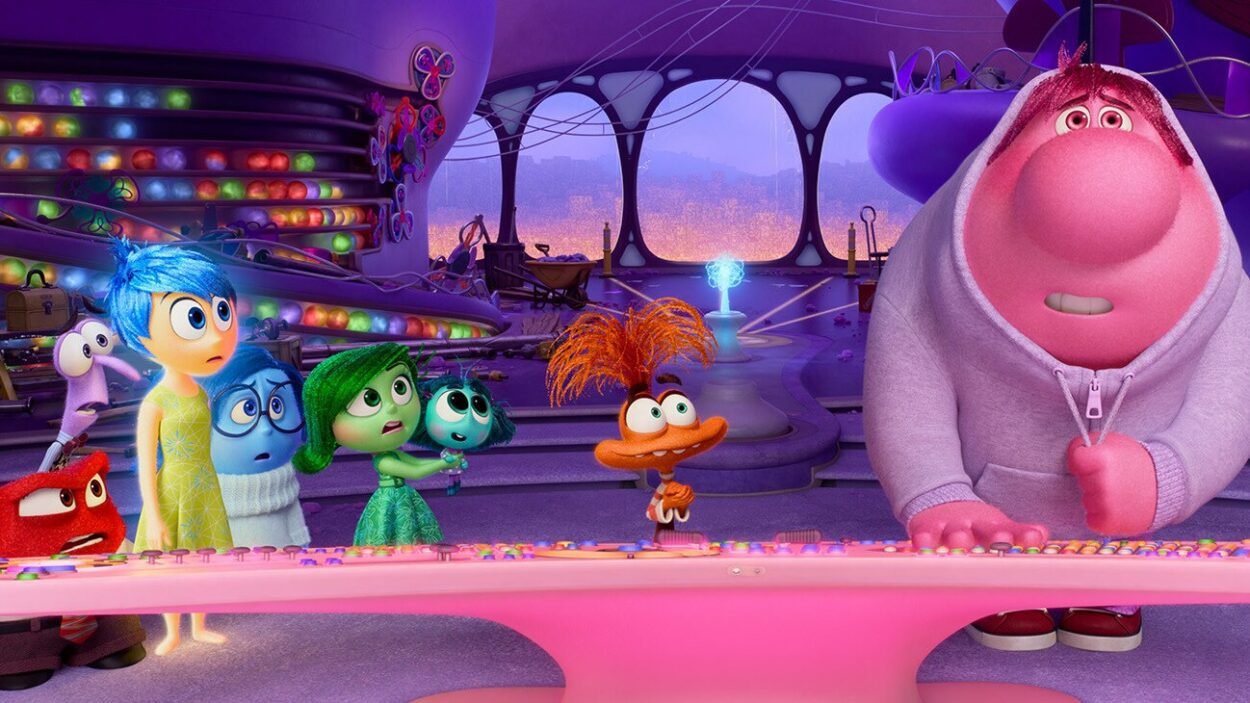“Inside Out 2” - Film Review
This review was originally posted on Film Obsessive.
Nine years ago, Pixar introduced us to the emotions that live in our brains with Inside Out. It was a fairly standalone story that was neatly wrapped up in its runtime and yet, Inside Out 2 is just days away from its theatrical release. Unlike some other sequels, Inside Out 2 doesn’t rest on its laurels. People will inevitably ask if the sequel is better than the original, and the answer here is a little more complicated than yes or no. Inside Out 2 takes the building blocks of basic human emotions and manages to capture the heart of the original film while weaving a new story about the never-ending journey of growing up.
© 2024 Disney/Pixar. All Rights Reserved.
Riley (Kensington Tallman) is now thirteen years old, and it’s been smooth sailing with Joy (Amy Poehler), Anger (Lewis Black), Sadness (Phyllis Smith), Disgust (Liza Lapira), and Fear (Tony Hale) in control. She has two best friends, Bree (Sumayyah Nuriddin-Green) and Grace (Grace Lu), and they all play on the same hockey team. Their dream is to play on the high school team next year, and it seems like that plan is within reach when the coach (Yvette Nicole Brown) asks the three friends to attend her skills camp. Over the course of the weekend, Joy and the original emotions are overwhelmed when four new emotions throw young Riley’s life into chaos. Anxiety (Maya Hawke), Envy (Ayo Edebiri), Ennui (Adèle Exarchopoulos), and Embarrassment (Paul Walter Hauser) now rule Riley’s brain, and her core beliefs are thrown in jeopardy.
In the current pop culture landscape, there’s an overcorrection underway. For so long, movies and television were afraid of sentimentality. It rose during the era of superhero flicks that didn’t want to lean into their earnest side. Now, instead of building a story that naturally pulls on the audience’s heartstrings through well-written and compelling development, some movies and series are simply overloading audiences with tragedies to force them to feel something. Characters are bombarded with disaster and the audience reacts because the events are inherently sad, but it feels empty because there’s no development. Sentiment requires the messy emotions that come from heartache, while sentimentality is merely a facade that can be knocked over without much effort.
© 2024 Disney/Pixar. All Rights Reserved.
Inside Out 2 earns its audience tears because it acutely pinpoints the way anxiety can take over a person’s life. As someone who has experienced panic attacks and worked hard to overcome bouts of extreme depression, Inside Out 2 feels like an outward reflection of the regular battles in my own brain. Pixar has an uncanny ability to take inanimate objects or abstract concepts and turn them into gripping, emotional journeys. They’re able to weave stories that have an impact on children and adults alike. Inside Out 2 is a magic trick that speaks to kids where they are now and gives adults the chance to reflect on their own past to better their futures.
© 2024 Disney/Pixar. All Rights Reserved.
About halfway through, however, Inside Out 2 turns into more adult fare. Not because of violence or anything along those lines, but because it becomes deeply existential. The first half of the film has its fair share of slapstick humor, and there are bright colors throughout that make it entertaining for kids, but once Anxiety takes full control of Riley, the film is less concerned with its younger audience. Inside Out 2 is mass-produced therapy. As a society, we are only now getting comfortable with talking about our emotions. In the nine years since Inside Out premiered, therapy has become more accessible and more socially acceptable. Perhaps, nine years from now, we’ll look back and see even more growth in our ability to openly share our feelings. Inside Out 2 is giving both kids and adults the vocabulary to process our actions and the feelings that inspire them. This may be an individual’s first introduction to the concept of anxiety and the ways it can manifest itself. Inside Out 2 manages to make a humorous adventure story with a deep, emotional undercurrent that can create real change in its viewers.
The heart of Inside Out 2 is the same as the original: we are all the sum of our emotions and our memories. Trying to cherry pick feelings and send your worst memories to the back of your mind creates an unsustainable environment. A person’s core beliefs are built out of the good and the bad of who they are, but none of us is defined by a single experience. Life, Inside Out 2 argues, is what we make it, because of the good things we experience and in spite of the bad.
support your local film critic!
~
support your local film critic! ~
Beyond the Cinerama Dome is run by one perpetually tired film critic
and her anxious emotional support chihuahua named Frankie.
Your kind donation means Frankie doesn’t need to get a job…yet.
Follow me on BlueSky, Instagram, Letterboxd, & YouTube. Check out Movies with My Dad, a new podcast recorded on the car ride home from the movies.



